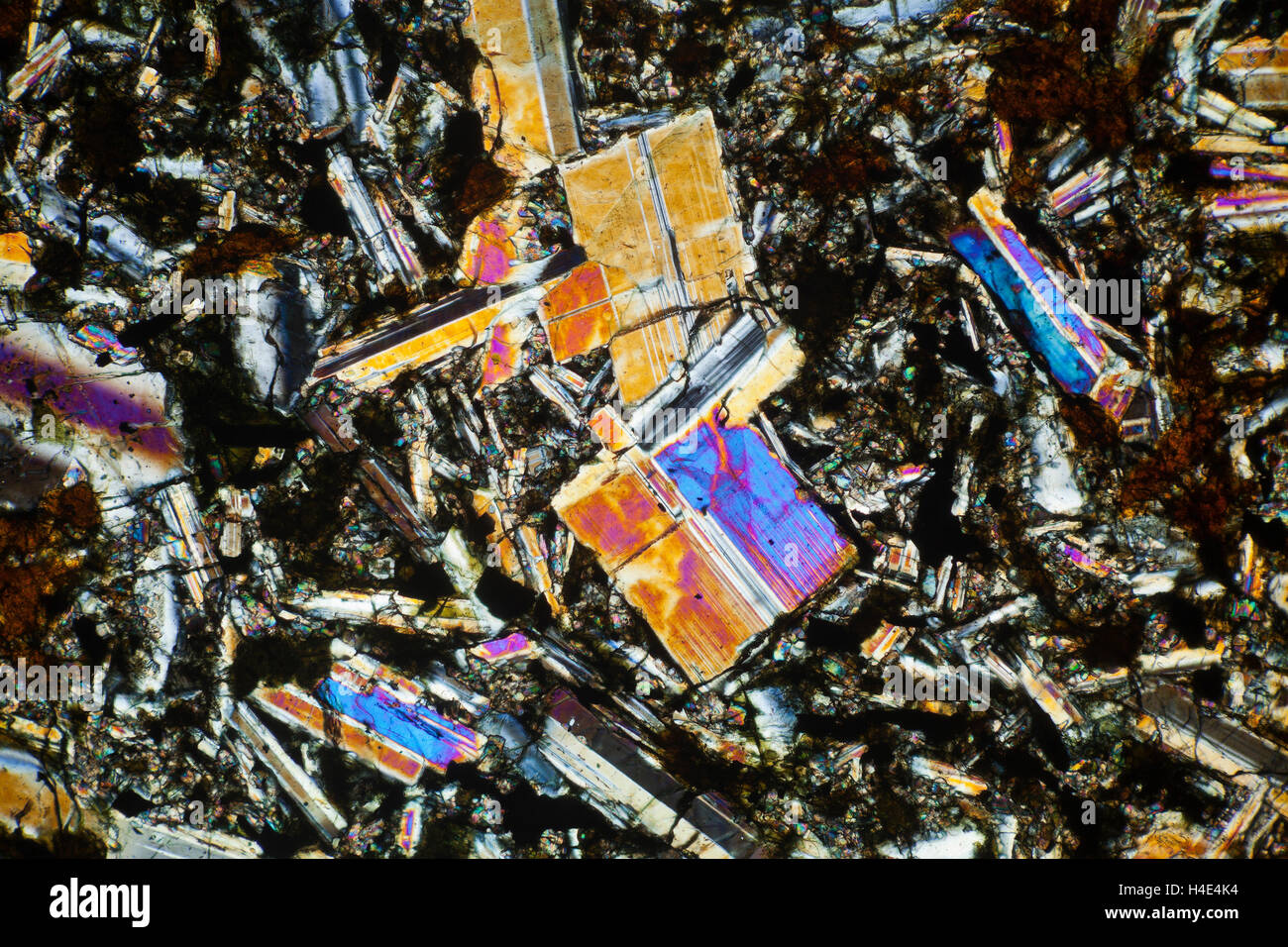Plagioclase-Dolerite, Tedeswell Dale, Derbyshire, UK. Polarized photomicrograph

Image details
Contributor:
Scenics & Science / Alamy Stock PhotoImage ID:
H4E4K4File size:
29 MB (2.4 MB Compressed download)Releases:
Model - no | Property - noDo I need a release?Dimensions:
3898 x 2599 px | 33 x 22 cm | 13 x 8.7 inches | 300dpiDate taken:
3 September 2016More information:
The geology of Jersey is characterised by the Late Proterozoic Brioverian volcanics, the Cadomian Orogeny, and only small signs of later deposits from the Cambrian and Quaternary periods. The kind of rocks go from conglomerate to shale, volcanic, intrusive and plutonic igneous rocks of many compositions, and metamorphic rocks as well, thus including most major types. The Brioverian rocks were formed between 900 and 700 mya. They were named after Briovère, the native name for St. Lô, in Normandy, which is the first area these rocks were described from. They start with turbidites in the west, centre and south of Jersey, including at St Ouens Bay, and St Aubin's Bay. The Brioverian sedimentary rocks are all well bedded and were originally the mid and outer parts of a submarine fan. This constitutes the Jersey Shale Formation. The shale is found at Gorey Harbour in the east coast, and La Belle Hougue Point, and Le Mont Mado granite has an occurrence. The shale is more easily eroded, and this has affected the shape of the island by the concave St Ouens's Bay and St Aubin's Bay. The deepest valleys (Valley of St. Peter and St. Lawrence) are cut into this soft rock. Other sediments associated with the shale are mudstone, and fine grained sandstone. Various sedimentary structures include flute and bounce castes, ripple lamination, graded bedding, cross bedding, and boudinage. The shale layers have been identified as Association IV in the submarine fan.